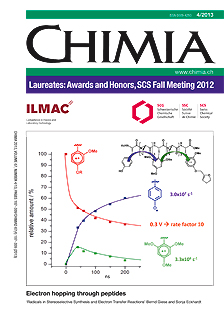New Approaches to Control Infections: Anti-biofilm Strategies against Gram-negative Bacteria
DOI:
https://doi.org/10.2533/chimia.2013.286Keywords:
Adhesion, Biofilm, Infection, Quorum sensing, LectinsAbstract
Hospital-acquired bacterial infections, especially with Gram-negative pathogens, present a major threat due to the rapid spread of antibiotic-resistant strains. Targeting mechanisms of bacterial virulence has recently appeared as a promising new therapeutic paradigm. Biofilm formation is a bacterial lifestyle, which offers a survival advantage through its protective matrix against host immune defense and antibiotic treatment. Interfering with biogenesis of adhesive organelles, bacterial communication or carbohydrate-mediated adhesion as anti-biofilm strategies are reviewed.Downloads
Published
2013-04-24
Issue
Section
Scientific Articles
License
Copyright (c) 2013 Swiss Chemical Society

This work is licensed under a Creative Commons Attribution-NonCommercial 4.0 International License.
How to Cite
[1]
R. Sommer, I. Joachim, S. Wagner, A. Titz, Chimia 2013, 67, 286, DOI: 10.2533/chimia.2013.286.







